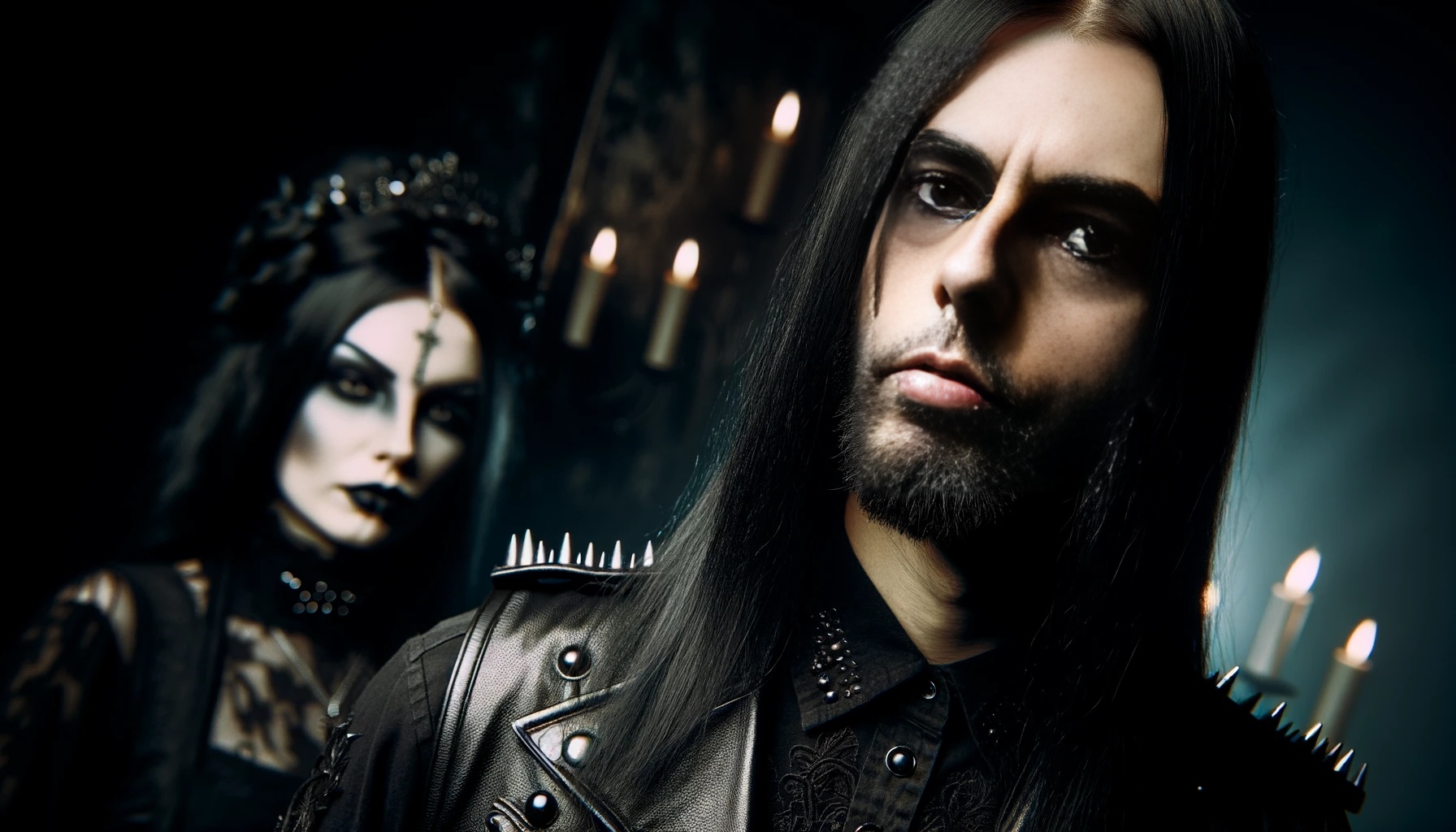In the realms of metal and goth music, the album cover is more than just a visual representation; it is a portal to the haunting and otherworldly atmosphere that defines these genres. Stepping into the world of metal album covers is akin to venturing into a twisted and chilling art gallery, where each piece encapsulates the essence of the music it accompanies. From sinister symbolism to macabre masterpieces, these album covers stand as iconic and evocative works of art that beckon the viewer into the darkness that lies within.
In this blog, we will embark on a journey through the chilling artistry that graces metal and goth album covers. Brace yourself for a harrowing and captivating exploration into the haunting visual realms that complement the spine-tingling auditory experience of metal and goth music.
The Sinister Symbolism: Metal album covers are often adorned with powerful symbols that resonate with the genre’s themes of darkness, rebellion, and existential pondering. From inverted crosses and pentagrams to occult sigils and ancient runes, these symbols evoke a sense of mystery and foreboding, inviting the listener to delve deeper into the abyss.
Albums such as Black Sabbath’s eponymous debut, featuring the eerie and desolate depiction of a dilapidated building, and Slayer’s “Reign in Blood,” showcasing a chillingly abstract yet violent cover, are prime examples of how the use of symbolism can enhance the overall impact of the music.
The Macabre Masterpieces: Many metal and goth album covers are works of art in their own right, showcasing the talent of skilled artists who weave visual tapestries of darkness and beauty. Elaborate illustrations of haunting landscapes, grotesque creatures, and deathly figures create an atmosphere of unease and fascination.
Take, for instance, Iron Maiden’s “Powerslave,” featuring the iconic mummified Eddie against an Egyptian backdrop, or Cradle of Filth’s “Cruelty and the Beast,” adorned with a disturbingly elegant portrayal of Elizabeth Báthory. These masterpieces complement the music they encase, transcending mere album covers and becoming gateways to the stories and emotions that unfold within the tracks.
The Eerie Aesthetics: In the metal and goth subcultures, aesthetics play a vital role, and album covers are the visual manifesto of these sensibilities. From intricate typography to monochromatic palettes and morbid art, these covers are a reflection of the haunting and alluring imagery that defines the essence of the genres.
Bands like Type O Negative, with their minimalistic yet evocative covers like “Bloody Kisses,” and Bauhaus, with their iconic album art for “Bela Lugosi’s Dead,” epitomize the goth aesthetic, while bands like Behemoth, with their elaborate and darkly detailed covers, showcase the opulent and ominous side of metal aesthetics.
The Provocative Controversy: Metal album covers have often courted controversy, pushing the boundaries of artistic expression and societal norms. These provocative visuals challenge the status quo and invite debates on censorship, freedom of expression, and the role of art in society.
Artworks like Cannibal Corpse’s “Butchered at Birth,” which was banned in several countries for its graphic and gory depiction, and Mayhem’s “Dawn of the Black Hearts,” featuring a real photograph of a suicide victim, are stark examples of how metal album covers can provoke intense reactions and blur the line between art and provocation.
The Evolving Medium: As the digital age transforms the music industry, the art of album covers faces new challenges and opportunities. While physical album sales decline, digital platforms provide a new canvas for artists to explore interactive and animated cover art.
Bands like Ghost have embraced this evolution, creating animated covers that add an extra layer of mystique and intrigue to their music. This dynamic approach to album art opens doors to innovative storytelling and engagement with fans in the ever-evolving landscape of music consumption.
In the sinister and captivating world of metal and goth music, album covers stand as visual gateways to the essence of the genres. The chilling symbolism, macabre masterpieces, eerie aesthetics, provocative controversies, and evolving mediums all converge to create a haunting visual experience that complements the auditory journey offered by the music.
As metalheads and goth enthusiasts, we find ourselves drawn into these dark and enigmatic works of art, forging a deeper connection with the music we cherish. The album cover becomes a sacred symbol, a tangible representation of the emotions and stories that the artists pour into their craft.
So, the next time you embark on a musical journey with your favorite metal or goth band, take a moment to immerse yourself in the haunting artistry of their album covers. Let the chilling visuals transport you to realms unknown, as you become one with the haunting essence of metal and goth music.
Don’t forget to follow me on social media or go back to the home page to read something else.
Follow me on social media


